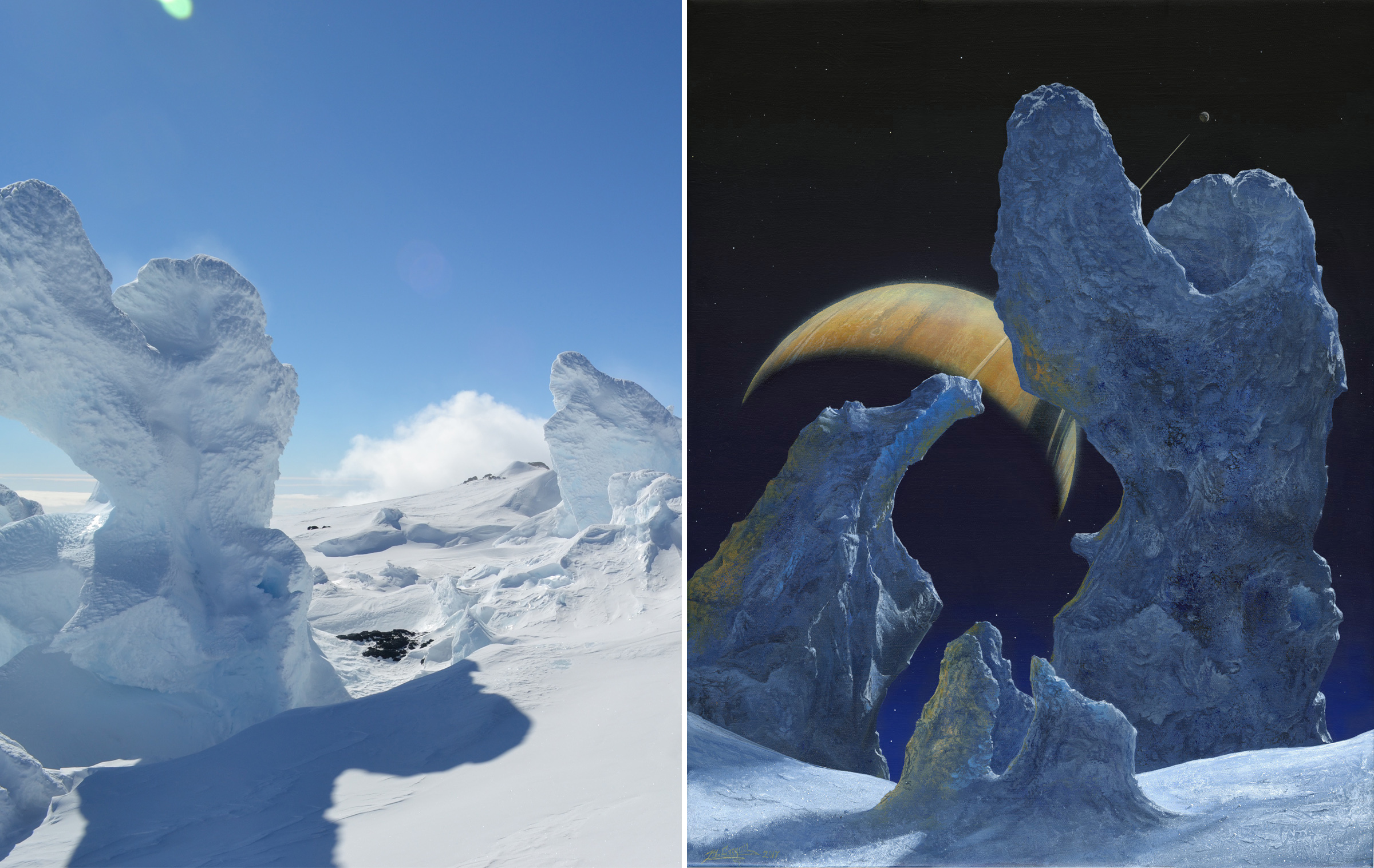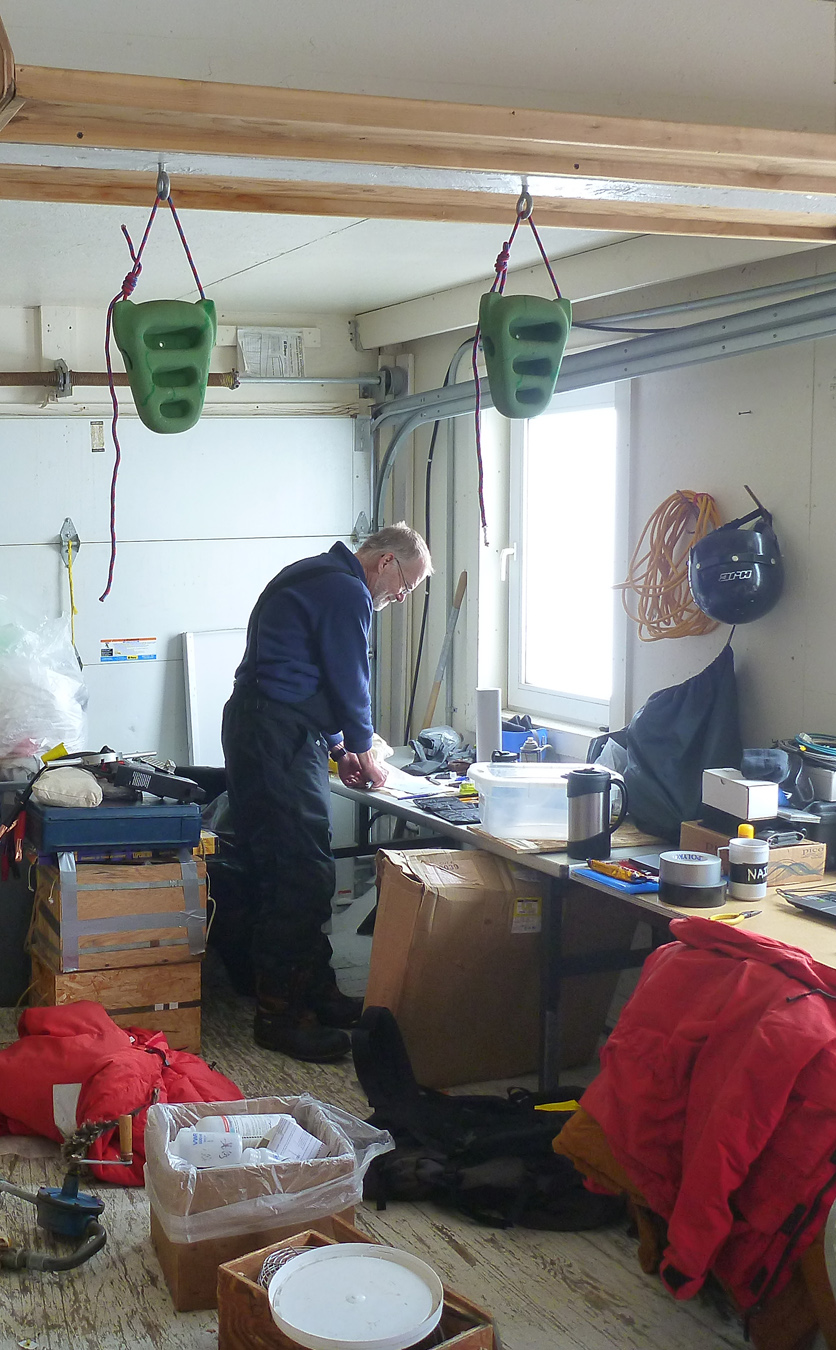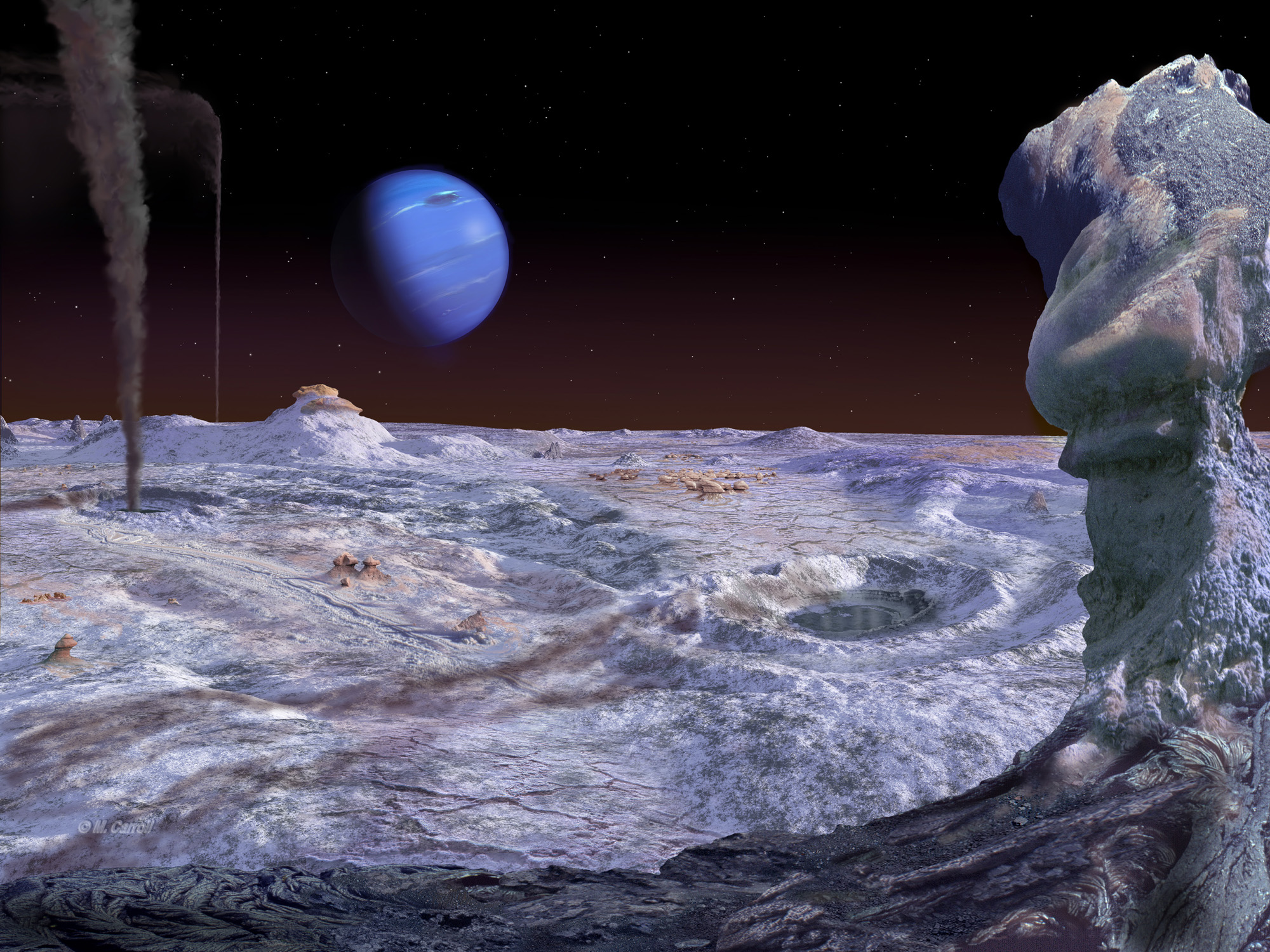On Earth, Echoes of Space
Astronomical artist Michael Carroll traveled to Antarctica for otherworldly inspiration.

Astronomical artist Michael Carroll imagines that ice towers, perhaps similar to the ones at left, photographed on Antarctica’s Mount Erebus, could form on Saturn’s moon Enceladus, depicted in the painting at right. Saturn and another moon called Mimas appear in the background. Art by Michael Carroll
Tune in to Science Friday on February 10 to hear a conversation with astronomical artist Michael Carroll.
As an artist specializing in alien landscapes, Michael Carroll often looks to earth’s own geology for inspiration. Aspects of Iceland echo Martian terrain, for instance, and volcanoes in Alaska are suitable stand-ins for what you might see on several neighboring planets. Most recently, Carroll ventured to Antarctica with planetary volcanologist Rosaly Lopes to explore structures that could resemble formations on frigid moons and planets in our outer solar system.
They encountered some potential analogs on Mount Erebus, the world’s southernmost active volcano, which rises nearly 12,500 feet on Ross Island. “It has fantastic formations that might be quite similar to what we might find on icy moons like Europa and Enceladus,” says Lopes, the manager of the Planetary Science Section at NASA’s Jet Propulsion Laboratory.

On the volcano’s southwestern slope, at about 830 feet from the summit, the team inspected an area called “Ice Tower Ridge,” for a series of frozen structures that can reach more than several stories high, according to Carroll. “They’re just elegant, bizarre things,” he says. “Some of them look like they were designed by Dr. Seuss.”
These towers mark the site of fumaroles, or vents through which volcanic gases escape. When those hot, moist gases hit the Antarctic air, they condense into crystals that build up over time, shape-shifting as erosion takes its toll. Because the fumaroles constantly belch steamy gas, the structures are hollow, says Lopes, and they connect to caves that are actually “quite warm inside.”
In these frozen towers, Carroll saw an analogy for structures that he imagines might exist on icy moons such as Saturn’s Enceladus. Thanks to data sent back by Cassini, we know that hydrothermal vents in the moon’s ice shell spew ice particles and water vapor. And “we might expect in these volcanic regions that there’ll be fractures, and there’ll be caves, and perhaps some [ice] towers,” says Lopes. A lunar lander could tell us for sure if such structures exist, but if they do, they probably don’t form exactly like the ones on Mount Erebus, says Lopes, because Enceladus has no atmosphere.
Carroll recently completed an acrylic painting depicting such hypothetical towers on Enceladus. To achieve the look and feel of ice, he used a variety of tools, including sponges, saran wrap, and even a toothbrush.
Antarctica offered plenty of fodder for other spacescapes, too, says Carroll, who’s working on a book with Lopes about terrestrial analogs for space. “The sea ice down where the Ross Ice Shelf meets the open ocean—that has all kinds of interesting analogs: pressure ridges, and ice flows, and weird bumps and hollows that look very, very much—strikingly—like Europa, Jupiter’s ocean moon,” he says.

Carroll has been creating space scenes for nearly 40 years (he does most of them digitally these days), and he often confers with scientists to improve the accuracy of his depictions. “Part of what I love about my work is the people that I get to chat with who are studying these new frontiers and doing work on the hairy edge of what we know,” he says.
“A lot of the data that comes back to us is just numbers—it’s not photos—so we [artists] get to do the translating for the scientist, and that collaboration is often a very rich one,” he adds.
For her part, Lopes appreciates Carroll’s perspective. “I don’t have the imagination of an artist,” she says, but in talking with Carroll, “it really forces you to imagine, what would this look like,” she says.
As scientists continue to gather hard data on other worlds, Carroll enjoys seeing if he captured reality. “That’s part of the fun of astronomical art,” he says, “you make these educated guesses and then later on, as science progresses, a lot of times you get to see if you were close or not.”
Julie Leibach is a freelance science journalist and the former managing editor of online content for Science Friday.